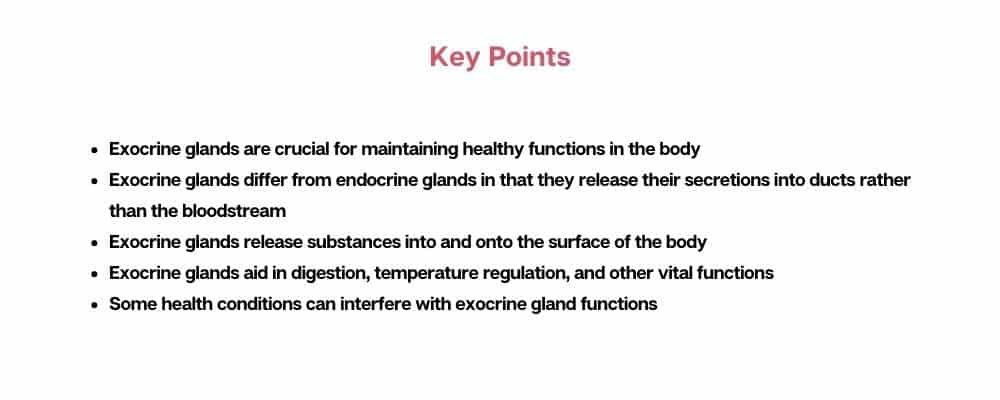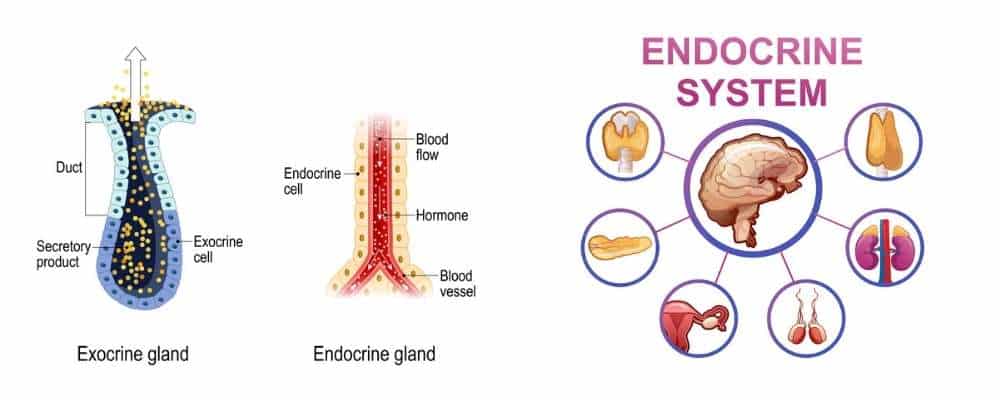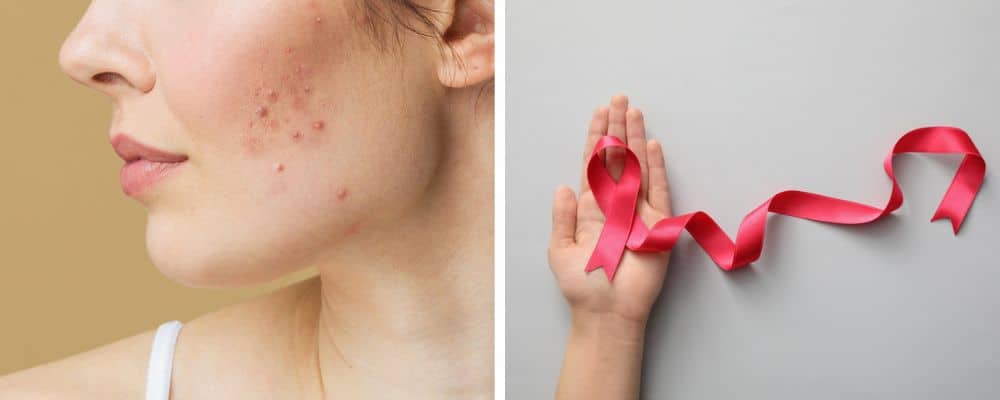
Exocrine Glands: Definition & Function
Table of Contents
What Are Exocrine Glands?
Exocrine glands are crucial to the body’s functioning, as they regulate vital processes, including body temperature (through sweat), digestion (through enzyme secretions), and other essential actions.
The exocrine system differs from the endocrine system in that the endocrine glands secrete hormones into the bloodstream that target receptor cells throughout the body. The exocrine glands secrete substances through ducts that assist organ functions and biological processes inside and on the body’s surface.
Exocrine glands consist of an acinus and duct. The acinus are tiny sacs that contain the secretion cells from the glands that the ducts have not yet released. It is in the acinus that secretion production occurs. The ducts are the passageways for the cell secretions.
What’s the difference between endocrine and exocrine glands?
The first difference between endocrine and exocrine glands is that endocrine glands do not have a duct system. Their hormones are released into the bloodstream and can travel through the body to their target receptor cells.
Exocrine glands release their secretions into ducts that then release them onto the surface of target organs or cells. The target sites for these secretions are close to the exocrine glands.
Endocrine glands produce hormones; exocrine glands produce secretions such as enzymes, ions, mucins, water, and saliva.
Whereas hormones secreted by the endocrine glands often have delayed responses, substances from the exocrine glands typically provide rapid responses.
Both endocrine and exocrine glands are crucial for healthy bodily functions.
What’s the Function of Exocrine Glands?
Exocrine glands monitor the body’s short-term organ functions and activities, responding with appropriate secretions when necessary.
Depending on the gland’s location, they may secrete substances that aid lactation, regulate body temperature, lubricate the skin and hair, protect the organs’ inner lining, assist digestion, absorb nutrients, or produce tears.
Types & Examples of Exocrine Glands
There are various types of exocrine glands and different cellular types, including mucinous, sebaceous, and serous. Mucinous cells make up various types of mucus, sebaceous cells include sebum, and serous cells include protein enzymes such as saliva.
Exocrine gland classification focuses on the method of secretion, such as:
- Apocrine glands, such as the mammary glands, make buds from the cell cytoplasm and membranes that lose part of the membrane as they break off into the ducts, releasing their secretions. An example here is the mammary gland.
- Holocrine glands, such as sebaceous glands, release their substance into the ductal system when the cell membrane bursts. With this method, there is frequent cellular turnover and replacement. In holocrine glands, the entire cell dies at the time of the secretion, such as with sebaceous glands.
- Merocrine glands use a process called exocytosis to release their substances into the ducts without damaging the cells or membranes, such as with the eccrine sweat glands.
Exocrine glands may also be classified by their cellular numbers, such as unicellular, a single cell making up the entire gland, and multicellular, where numerous cells make up the gland. An example of a unicellular cell is a goblet cell, such as those that line mucosal surfaces. Multicellular cells, such as those found in the submandibular (serous) gland, have more than one cell.
Other classifications focus on the type of secretion, such as serous (watery), mucous (viscous), and mixed (both serous and mucous).
In some instances, exocrine glands are also organs, like the pancreas and liver. Along with their exocrine functions listed below, they also secrete various hormones into the bloodstream as part of their endocrine system functions.
Here are the exocrine glands:
- Brunner glands – found in the duodenum, the first part of the small intestine, these glands produce mucus to aid food digestion and nutrient absorption and protect the duodenum from stomach acids
- Ceruminous glands – located in the ears, these glands produce cerumen (ear wax) to protect the ears from infection and damage
- Lacrimal glands – located above the upper eyelids, these glands secrete fluid into the tear ducts near the eyes when you blink to keep the eyes moisturized
- Liver – the largest exocrine gland, secretes bile juice containing cholesterol and bile acids into the bile duct, which then enters the gall bladder before heading to the stomach
- Mammary glands – produce breastmilk to nurture and boost immune system functions
- Mucinous glands – these glands in the mouth produce lubricating substances to aid in swallowing food and pills
- Pancreas – secretes enzymes to aid in digesting carbohydrates, fats, and proteins and neutralizing stomach acid
- Serous glands – three types (parotid, sublingual, and submandibular) of salivary glands located in the mouth produce between 1 and 1.5 liters of saliva daily to help with digestion
- Sebaceous glands – these glands are on the skin and also open into hair follicles, secreting an oily substance called sebum to lubricate and protect the hair and skin
- Stomach glands – these glands release enzymes that assist with food breakdown and nutrient absorption
- Sweat glands – eccrine sweat glands cover most of the body surface, producing a non-oily substance (sweat) to regulate body temperature, apocrine sweat glands slow sweat evaporation by secreting a fatty substance to maintain coolness
What Are Common Conditions and Disorders That Affect Exocrine Glands?
- Acne: when the sebaceous glands are blocked by sebum, free fatty acids release to create pimples
- Bromhidrosis: occurs when bacteria on the skin break down dried sweat and cause body odor
- Brunner’s gland hyperplasia: caused by a noncancerous tumor on the duodenum
- Cancer: different types of cancer can interfere with exocrine gland functions
- Cystic fibrosis: this disease, caused by a mutation of the protein involved in mucus, digestive fluid, and sweat production, causes a buildup of thick, sticky mucus in organs, such as the pancreas and lungs
- Hyperhydrosis: occurs when the sweat glands overproduce sweat
- Mammary duct ectasia: thickening and swelling of the milk ducts that blocks milk production
- Pancreatitis: stops the pancreas from producing digestive enzymes needed by the small intestine to breakdown food
- Sjögren’s syndrome: this autoimmune disorder decreases production in the lacrimal and salivary glands leading to dry eyes or dry mouth
Conclusion
Exocrine gland functions are crucial to supporting overall health and well-being. You can protect your exocrine system by maintaining a healthy diet, staying hydrated, keeping physically active, limiting alcohol consumption, and avoiding tobacco.



